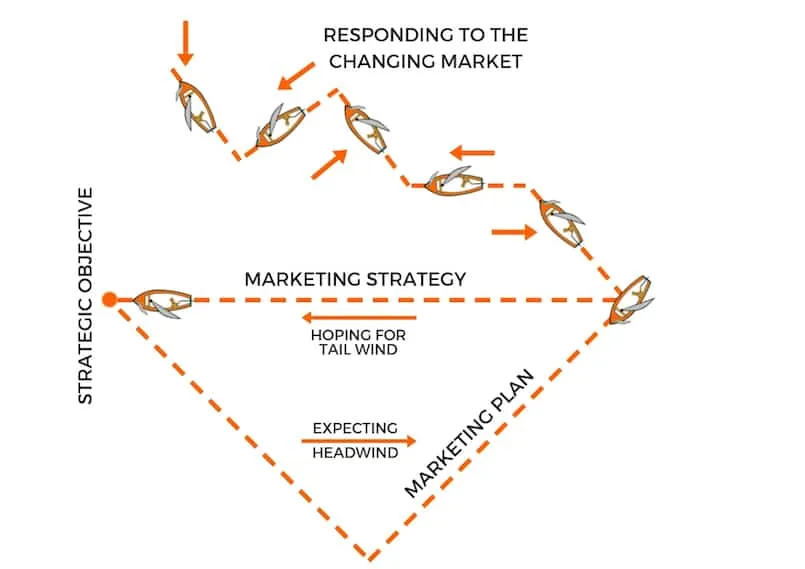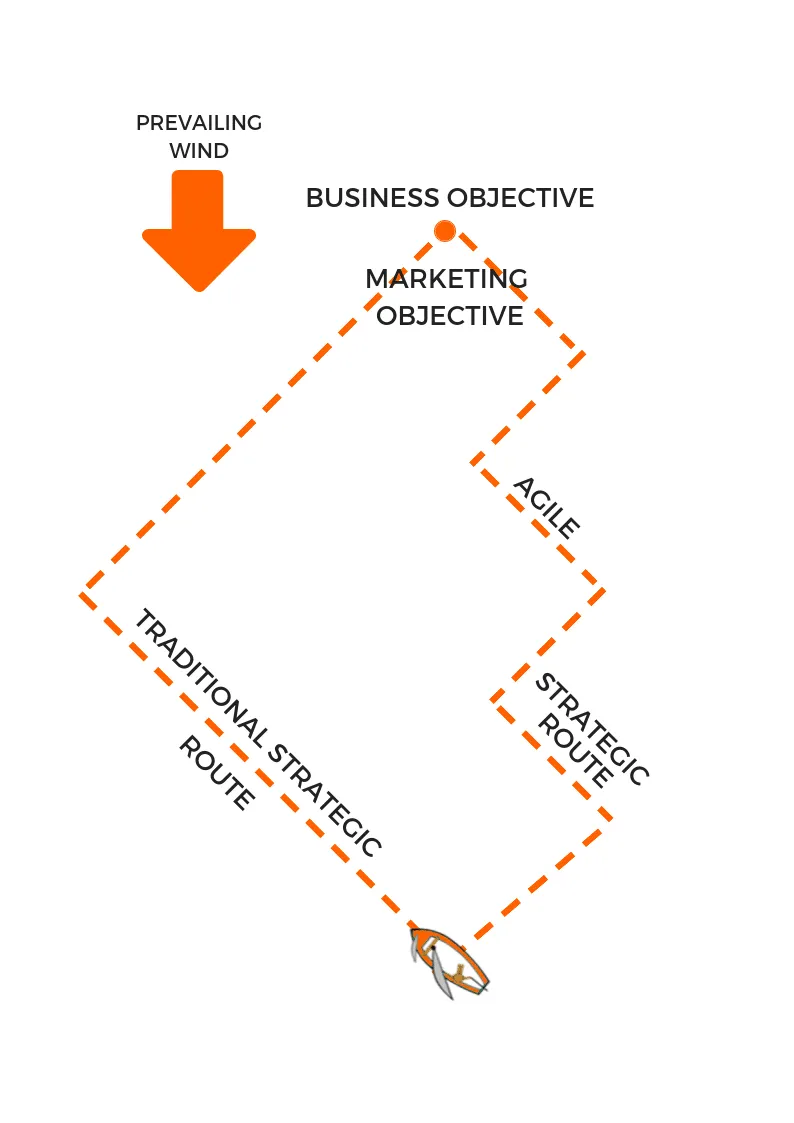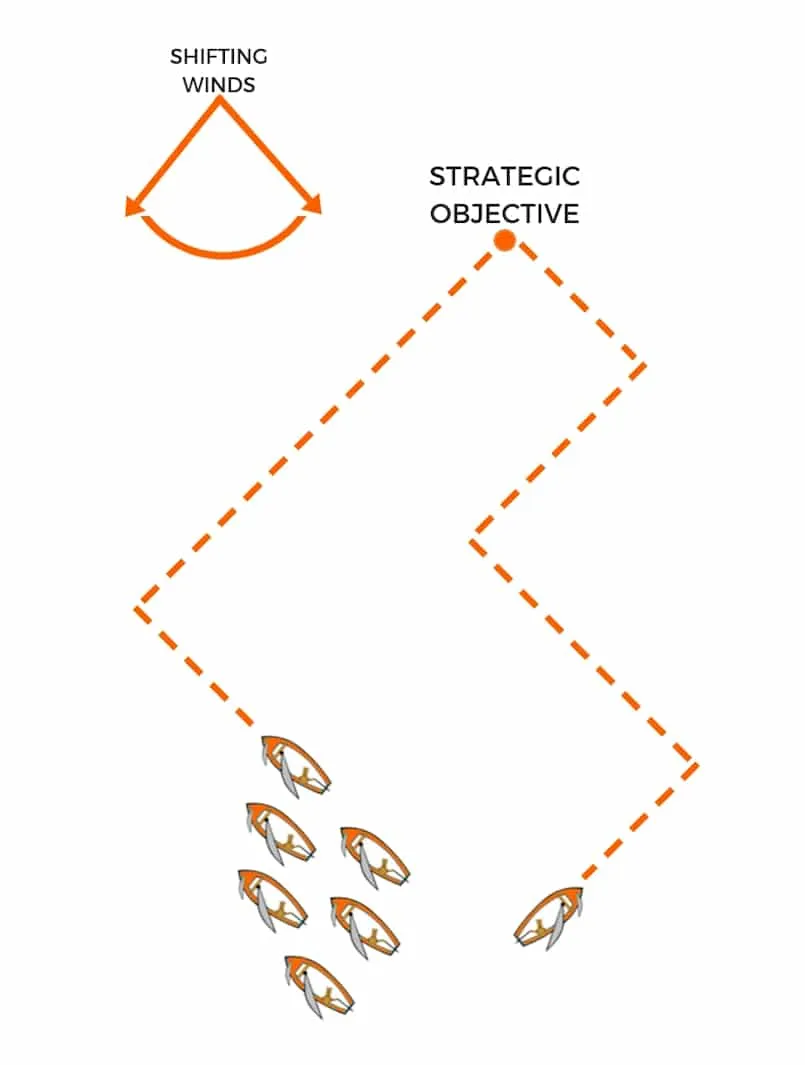Working within an organisation’s annual financial process means you are likely to be either preparing, or have just finished, your annual planning and budgeting. In fact, it can often feel that just as you complete one round of planning and budget setting, the next round has arrived before you have really got into implementing your plans.
But there have been major changes over the past decade, which have had significant impacts not only on the marketing planning process, but also on the role of marketing strategy. Instead of setting a long-term marketing strategy and implementing the tactics to deliver it over the year, marketers are often finding themselves so focused on delivering the short-term tactics to deliver the immediate wins that often the longer term strategy is forgotten.
Even that most traditional and strategic of marketing categories, Consumer Package Goods, is focusing on short-term tactics to reach and convert customers to drive revenue and market share expectations. And retailer marketers, who plan out their marketing a year or more ahead to leverage seasonal retail events, are finding themselves competing with online e-commerce, which appears to be able to create sales events almost overnight.
What has caused these changes in the role of the marketing strategy? What is the emerging trend we are seeing across a wide range of categories and markets where growth is a strategic focus but continues to prove a challenge?
In his book “Good strategy, Bad strategy”, Richard P. Rumelt writes:
“Strategy is at least as much about what an organisation does not do as it is about what it does.”
In developing a marketing strategy, the marketer is mapping out a plan of action to optimise, successfully achieving the marketing objectives for the organisation. It is aligned to delivering the business objectives (usually growth-related) and takes a medium to long-term view of achieving the same, based on the resources at hand (products/services, distribution channels, budget etc), the competitors’ positioning, activity and strategy, and – of course – the customer.
Traditionally, the marketing strategy was developed either at the launch of a new product or service or when it was deemed the current marketing plan was not working and a new one was needed, often with the appointment of a new CMO or head of marketing. The implementation of the marketing plan, developed from the strategy, would often take a year, and therefore by the time the plan was executed it was time to review and do the same again.
The role of the marketing strategy was to set the direction for the foreseeable future (12 months to up to five years in some cases) and inform the marketing plan on an annual basis to define what marketing should do and more importantly what marketing should not do to deliver on the organisational objectives.

More than at any other time the marketing function, within most organisations, is under pressure to deliver or at the least contribute to measurable growth to justify the marketing budget – which has been under downward pressure for most of the 21st century.
At the same time, the rise of social media, digital media channels and marketing technology, such as programmatic and real-time media bidding, provides marketers with a means not only to position brands, products and services against the competition in the mind of the customer, but also help fill the euphemistic ‘online sales funnel’ with leads to be converted by sales or even, in an e-commerce world, convert those leads to sales themselves.
Enter the concept of Agile Marketing, inspired by the process of agile software development, and adapted to the marketing discipline. Agile Marketing is about testing and learning, using the results to adapt in real time and go back to the market to optimise marketing investment and deliver measurable Return On Marketing Investment (ROMI). In this world the measures are customer acquisition, cost per lead and acquisition and revenue growth.
The focus is on the short-term sales results and optimising the lead and conversion rate. But what about the longer term marketing strategy and market positioning of the brand? An online insurance company we work with embraced agile marketing as a way to maximise marketing budget and ROMI. This included in-house creative and media buying, so they could respond to the market in real time with all agile marketing processes managed totally within the organisation.

But while the marketing team was driving terrific acquisition results in the short-term, there was a realisation within the marketing leadership that their agile response to the market had caused them to drift from the core marketing strategy that had built their competitive strength and differentiation.
As Richard P. Rumelt had stated above, the marketing strategy defined what they would do and just as importantly what they would not do. But with a short-term focus on driving sales results they ended up doing whatever it took to continue or improve those results, without consideration of what the strategy told them not to do, and therefore they were compromising the marketing strategy.
This is easy to do. After all marketers face more choices than ever. There are more channels and more options than there ever have been. Marketers are also facing greater levels of unpredictability, competition and complexity. But out of this complexity and unpredictability comes more opportunity, and therefore a greater need for the agility to take advantage of opportunity as it arises.
However, there is also a need for a framework to inform the decision on which opportunities should be taken and how you should take them. This is the emerging role of the marketing strategy in an agile marketing process.
I like to think of it as being like sailing. Not the cruising type sailing – a lazy afternoon in the sun, sitting on the deck, sipping champagne. But the racing type of sailing, with an ultimate goal – the finish line and a fleet of competitors in changeable conditions.
A good skipper knows the strengths of the boat and the crew and will have a strategy to play to those strengths and maximise performance in current conditions. The skipper also has tools at his or her disposal to provide updates on the current situation and changes in the surrounding environment. The skipper should know something of the competitors in the fleet – their tactics, strategies, strengths and weaknesses.
As with agile marketing, the crew will hopefully have practiced and become incredibly efficient at changing tack. As they sail up to the starting line, the skipper will position the boat to get the best opportunity on the wind and the fleet. From before the start to the finish line the focus of the skipper and crew is on the ultimate goal, which is crossing the line ahead of the rest.
The skipper will stay on strategy to ensure the maximum performance of the boat and the crew, but will constantly be looking for opportunities to take advantage of changing wind and weather conditions and the tactics of the competitors, only reacting when there is a clear opportunity to take an advantage or avoid a disadvantage.
After all, simply following the fleet means if there is a knock from a wind change then the whole fleet gets knocked back, but the skipper who decides to stay the course when everyone else tacks is looking for the wind lift that will put him or her ahead of the fleet.

What does this mean for marketers? There is a business objective, which is the finish line. Aligned to this objective is the marketing strategy, which defines the best use of the resources available to position the brand, product or service successfully to deliver that objective.
There is a marketing plan derived from this strategy, which is the race plan, based on the current weather conditions, the competitive set and the resources available. But then throughout the race there is a constant need to monitor changes in the current situation that might deliver opportunities. Whether these opportunities are taken, or not, depends on the marketing strategy and plan.
This is a short, mid and long-term view of a marketing strategy. The long-term is set within the marketing strategy. And while they say you should always review that strategy, tactics never drive it. Instead, the tactics are assessed against the strategy to make sure they capitalise on the short-term objectives while building the long-term marketing strategy. The marketing plan is the medium-term review where strategy and tactics meet to achieve short, medium and long-term objectives.
While the organisation may be interested in this quarter’s sales results and marketing’s contribution to those results, marketing must remember it also plays an important longer-term value creation role, ultimately to win the race. The role of the marketer today is to use the marketing strategy to assess short-term tactical opportunities, but to ensure the organisation stays on track to deliver the agreed medium and longer term objectives of the organisation as well.
This article first appeared in The Australian Business Executive magazine on November 8 2018
Ensure your marketing strategy is not only robust, but also agile. We can assist by reviewing your strategy against your business and marketing objectives. Find out more



